Mazda BT-50 review and buyer's guide
The Mazda BT-50 is more than just an Isuzu D-MAX clone. It can tow, carry and transport with relative ease, but it’s also great value and offers a premium interior (for a ute).
The Mazda BT-50 is a step forwards for the ute market in Australia because in addition to doing all the hard work you expect from such a vehicle, but it’s also has a nice place to sit.
The BT-50 promises to be as difficult to look at as Gal Gadot, but it’s also well equipped, and affordable for anybody who needs a capable ute but not a trophy truck Here’s everything you need to know.
If you’re in the market for a new ute, let’s not sugar-coat the Mazda BT-50, because you need to know exactly what it can and cannot do for your money.
The fact is, the BT-50 is not perfect - far from it - and in order for you to make a balanced, informed choice when buying your next new ute, you need both the positive and negative about how you’re planning to use it.
You should also be considering the Mitsubishi Triton in the spirit of economic rationalism, because it does everything you need it to, without the high price ceiling of Hilux, Ranger and Amarok.
You’ll also find this useful How to save thousands on new Isuzu D-MAX and Mazda BT-50 >> which will help you save a bunch.
So, you need to be clear on the facts you need to know in order to decide if the BT-50 is right for you. Is it outright payload or towing capacity you focus on most? Do you need a rounded blend of these heavy hauling capabilities mixed with a comfortable interior, a handsome exterior and infotainment ergonomics? What work is your potential BT-50 going to be doing?
Before we go much further, if you’re looking for a serious towing beast, check out my various reports on pulling above your weight and the inherent dangers of dynamic instability - because BT-50 is rated for 3.5 tonnes, but you’re insane to try. We’ll get to that in detail.
Firstly, you need to understand that the BT-50 is literally an Isuzu D-Max underneath the leather, dashboard plastic and curvy exterior.
Utes happen, typically, about once every eight to 10 years. So, essentially, the BT-50/D-MAX is the platform that has to carry both badges forward for the next decade. In other words - fundamental technical innovation at a platform level on utes occurs in steps, roughly once every decade.
These utes are twins. Dizygotic, but twins. They’re being made by Isuzu in Thailand. Mazda has paid Isuzu to latch onto Isuzu’s R&D and production facilities, and cosmetic differentiation. Because that’s all a lot cheaper than doing it yourself from a clean sheet.
You’re currently looking at the next step for both vehicles, on their market debut, and you have to decide if this is enough of a step forward to warrant you opening your wallet and splashing your cash significantly on either one.
It might be significant enough for you to give BT-50 the nod - especially if you’re not motivated by technological innovation and engineering progress. And that’s perfectly fine - utes are a tool, and as long as the basics are done right like reliability, capability and pricing, then you’re probably going to be happy with either the Mazda or the Isuzu (when they eventually have stock).
Mazda and Isuzu really did upgrade this platform, using ‘gigapascal’ ultra-high-tensile steel which cuts weight and boosts stiffness by a claimed 20 per cent. (Gigapascal steel is roughly four times the strength of conventional mild steel - the stuff beams and columns are typically made from.) Learn more about advanced high strength automotive steel >>.
They also upped the proportion of 390MPa steel in the body (compared with the old one), and this itself is about 50 per cent stronger than plain old mild steel.
There’s bigger brake discs up front, too, but you’re still looking at drums at the rear, which is okay. Wading depth is up to 800mm now, from 600 - and fair enough, that’s an impressive increase.
They’ve added a rear diff lock, too, because previous D-MAXs had an open rear diff - not even LSD. So that’s a step forward. But except for the steel in the body - all these things could all be bolted on fairly cheaply. They’re not deep fundamental improvements.
So you’re looking at leaf springs, drum brakes, rear drive, luxury interior, few more safety features - with the upper-spec models clearly targeted at suits in utes. People using a somewhat expensive ute as daily transport, who don’t really need a workhorse.
FEATURES & PRICING
BT-50 dual-cab starts at $47,500 and hits $74,000 for the GT dual-cab 4x4 auto.
Compare this with a Mitsubishi Triton range which starts at around the $44K mark for dual-cabs and tops out at $65K for the GSR.
Meanwhile, the pricing on others like the Ford Ranger and Volkswagen Amarok, and the Toyota Hilux. Before on-road costs, Ranger Platinum and Volkswagen Amarok max out at well over $80,000, and the Toyota Hilux with the addition of the GR Sport is also now a $75,000 vehicle before you pay on-road costs.
But Mazda offers a modest starting price at $52K driveaway for a dual-cab cab-chassis, and then if you want the full-fat Thunder version with the black bullbar, the flashy sports bars in the tray and the electric tonneau cover, you can have that highly practical off-roading package for more than $5000 less than the bigger-name competition.
Or if you’re more like the majority of ute buyers who are more likely to select something in the more reserved, more affordable and far simpler part of the BT-50 range, there’s excellent value to be found in the $50-60K mark with something like the XTR, particularly the cab-chassis with the drop-down aluminium tray side panels. This is a good pick if you’re a tradie with tool boxes and storage units.
If you need to be pushing the weight limits in a BT-50, such as towing a reasonably heavy tool trailer, the cab-chassis XT will offer you those 4.5 seats in the cabin, with minimal kerb weight and therefore maximised potential payload.
In the automatic 4X4 version, the XT weighs 1.9 tonnes and has a maximum payload of 1095kg (when fitted with the standard aluminium tray. But at this point you need to think about exactly how much you’re planning to be carrying with you every single day. Is this BT-50 supposed to be heavily loaded every single day, or will it just have the standard few hundred kilos of the same stuff, generally speaking?
If you don’t need to max-out the haulage potential, something with more features (and creature comforts) is absolutely allowed, especially if you’re running the show.
Something slightly more upmarket - nicer to sit in every day - like a GT at roughly $63,000 driveaway is going to come with a payload of still over 1000kg (1070kg to be precise, but you get the nicer leather interior, adaptive cruise control, LED foglamps, the dual-zone climate control, heated front seats for those dreary winter early-morning starts, and electric seat adjustment.
That’s the joy of the BT-50 - you can do about 80-90 per cent of what the more expensive, more popular ute names can do, but with $10,000 or more still in your pocket.
Utes don’t have to be agricultural and miserable things to use every day - not anymore.
USEFUL LINKS FOR TOWING, UTES AND TRAILERS
My Complete Heavy Towing Guide: GVM, ATM, towballs >>
Heavy towing with an automatic transmission: What not to do >>
Anatomy of a towing disaster: How to prevent one >>
Epic towing disaster Q and A: Reacting to your trailer crash feedback and commentary >>
INTERIOR
Mazda has spent big bucks on the styling, in-cabin comfort and features - things of that nature. This is a good thing for buyers who intend to spend long periods of time actually driving the vehicle.
For decades, utes have been roughly designed, crudely trimmed vehicles with lots of plastic, and terrible ergonomics but not anymore. The BT-50 is one of the best examples of a fairly simple, unrefined vehicle like the Isuzu D-Max being given an interior that is genuinely comfortable to spend a long period of time driving every single day.
You minimum entry to the leather interior is the GT. The GT can not be had in three drivetrain configurations, unlike the XTR which gets the cloth seats and can be had with either 4X2 (auto), 4X4 (manual) and 4X4 (auto) - all with the 3-litre diesel.
But the GT only comes in 4X4 auto with the 3L diesel - and that’s a good thing, because that means you’re always going to have that off-road capability underneath you. Rain, hail or dusty farm.
But on truly fundamental improvements, it’s a different story, and not wanting to take cheap shots. So let’s acknowledge the positives: Nice front end styling. Nice interior. Wireless smartphone integrations - excellent touch there - because tradies are going to spend every single day in their ute and not having to drape cords everywhere among paperwork, tools etc., is an advantage.
On creature comforts and interior layout - big tick: you’re going to be comfortable in your BT-50, that’s a given, although I would be considering some heavy duty seat covers if studded jeans, pliers, or any sharp-edged equipment is coming anywhere near your ute. I’m not saying this tongue-in-cheek either - there are plenty of people who need a ute but not a shitbox free to be trashed by the apprentices. One exception I note, for the foreseeable future, is no wireless phone inductive charging pad. Oops a daisy. That might come as an update in coming years.
In the highest model iterations like XTR, it’s going to present well and be heavily equipped. And it should be reasonably safe. So that’s great.
Even the rear seats are a nice place to plonk the kids or even business partners if you’re in that small-medium business position. There’s ISOFix points outboard, and a centralised top tether anchor point with fabric feed-loops for the belts.
In the back you get dual-zone climate control and central cupholders in the armrest, and those outboard adult seatbacks actually get pretty decent bolstering which is rare on this kind of vehicle, historically.
ENGINE
The engine, I’m sad to say, is both an outdated museum exhibit and a missed opportunity.
It’s the same old Jurassic 3.0-litre inline four, only with a different turbocharger and a slight increase in fuel rail pressure. Power notionally goes up from 130 to 140 kilowatts, and torque from 430 to 450 Newton-metres. So it’s got plenty of grunt for moving you and your 1090kg - 1065kg of payload (depending on model - we’ll get to that).
To put this in perspective - and I know this will offend Isuzu fan boys - I’d like to say I’m sorry about that, only, I’m not - here’s a three-litre diesel engine which manages to perform the same as Mazda’s current 2.2-litre diesel. It’s a good engine: 140kW peak power at 6000 RPM, 252Nm peak torque at 4000 revs - currently moves the CX-8 around weighing nearly 1.8 tonnes.
Skyactiv-D diesel engine has a lower compression ratio than previous models which allows for much lighter internal components. The lighter engine was designed to reduce internal friction to enable more responsive power delivery. Multi-hole piezo injectors and variable valve lift optimise engine economy.
-Mazda Australia
Mazda’s 2.2 Skyactiv-D (learn more here>>) does the same job on output with roughly 25 per cent less capacity. The Isuzu engine, in the context of modern diesels, is frankly a monument to thermal inefficiency, which is the exact opposite of the engineering intent of every Mazda SKYACTIV engine.
To me, this is a philosophical bridge too far. You cannot be Mazda and say all that you have said about the intent of SKYACTIV, then sign this contract with Isuzu. You can certainly put this engine in a BT-50, and they have, but I’m not so sure you can do this and hope to emerge with your credibility intact. Or, maybe you can, but I just don’t see how.
This engine is renowned for being unrefined - most reviewers mention this. That’s mainly because large-capacity inline fours (although they are in perfect primary balance) suffer from profound secondary imbalances.
These are significant out-of-balance forces and couples rotating at twice the crank speed. I know, it’s a brain-bender. It’s mainly because the pistons move together in pairs, and it’s a four-stroke engine.
WANT TO KNOW MORE ABOUT CYLINDER IMBALANCE?
Three cylinders versus four: What’s the best engine for you? >>
These profound vibrational effects cannot be engineered out, without complex countermeasures. This is why reviewers routinely call this engine ‘rough’. Clever engine mounts - just not enough, typically, to fix the ‘shakin’ all over’ character of the large four-potter.
I could even forgive ‘rough’ - if the new ute launched as the best engine in the class - but it’s not, even with the diminutive performance upgrade this time around.
The ageing 3.2 Ranger is gruntier, meaning so is the outgoing BT-50. And it makes me wonder how - exactly - a carmaker justifies downgrading the powertrain on a new model. That alone is extraordinary. Not in a good way.
To put this another way, if the Isuzu engine had the same specific power output as a Triton’s 2.4 diesel, it would be producing 166 kilowatts.
TRANSMISSION
The six-speed auto that goes with the Isuzu engine is - I’d have to say - completely in character. It’s just not a slick union. I’m not alone in saying the transmission is rough. Perhaps this can be improved by better powertrain software control - I don’t know. Let us hope so.
And finally, there’s the 4WD system itself, which remains a throwback to the 1970s. You get rear-wheel drive in high range for high-traction surfaces. Four-wheel drive in both high and low ranges for soft surfaces only.
We actually have this thing now, in the broader automotive domain: It’s called ‘all-wheel drive’. It uses a centre diff. If you incorporate one in your ute design it would allow the use of all-wheel drive on high-traction surfaces - without breaking the transmission. Wouldn’t that be nice?
If you’re hazy on the distinction between 4WD and AWD, Subaru has a neat explanation here >>
Mitsubishi already does that, effectively, with the Super-Select II transfer case in the Triton >> and Pajero Sport >>. Ford Ranger has a version of it with a clutch pack that simulates the same thing, but without a centre differential. 4MOTION Amaroks have it, too.
And I’d suggest, when you’ve got, like, 450 Newton-metres being pumped to the rear driving wheels, on a rainy night, perhaps with mum driving and your two kids in the ute, completely unladen, on an unfamiliar road with sub-optimal civil engineering, it makes a lot of sense to send drive to both the front and rear axles, as opposed to just the rear. As a primary safety and control consideration.
But no - not on D-MAX or BT-50 - for what looks like the next eight to 10 years. Disappointingly. On vehicles increasingly popular with, and targeted to, families. Still Massey-Fergusson down below, in terms of getting the power to the ground safely.
I'll help you save thousands on a new Mazda BT-50 here:
Just fill in this form.
No more car dealership rip-offs
Greater transparency
Less stress
FUNCTIONALITY
The primary task of a ute is, of course, moving stuff. Your first task is deciding how much of what type of “stuff”, either humans or things, you’re most likely to move most.
Depending on which model BT-50 you choose, your limits for how much is going to be legally possible are going to vary, not just because you’re prohibited from carrying people in the tray, but because, obviously, there are technical limitations on each variant based on drivetrain, weight, and design limits.
So let’s pull back the glossy marketing bullshit about what a hardcore ute this is and look at the bareback facts. Because, like Triton, there are plenty of configurations, all of which alter how much you can carry.
There are three body styles: single-cab, ‘freestyle’ cab and dual-cab. Just like old BT-50.
Within each body style you can have 4x2 (two-wheel drive only) or 4x4. The only manual transmission options in BT-50, is the single-cab 4x4 version, freestyle-cab 4x4 and dual-cab 4x4; it’s a six-speed job, but there’s no manual in any of the 4x2 versions. It’s auto-only in 4x2, although you’ll be wise to note that it could be a good thing because the 4x2 is probably going to be the smartest option if heavy towing is the main game for your BT-50. This is because adding and additional 200-ish kilograms for the sake of having a low-range transfer case and front differential is added kerb weight you don’t actually need and takes away from the vehicle’s GVM - meaning you can’t tow as much with the so-called ‘top-spec’ BT-50s.
I made this point on the previous BT-50, based on Ranger. And it’s kinda still the case now. Here are the numbers, in case you think I’m talking via my posterior:
XTR 4x4 auto ($59,000 driveaway) dual-cab: Payload 1070kg; GVM 3100kg; Towing cap. 3500kg; Kerb weight 2030kg.
XTR 4x2 auto ($53,000 driveaway) dual-cab: Payload 1055kg; GVM 3000kg; Towing cap. 3500kg; Kerb weight 1945kg.
XT 4x2 auto ($50,300 d/away) cab-chassis d-cab: Payload 1081kg; GVM 3000kg; Towing cap. 3500kg; Kerb weight 1919kg.
Clearly the XT cab-chassis is the ideal choice if you need room for four adults and a significant payload in the tray (where heavy towing might be occasional at best). Plus, Mazda offers ‘heavy duty’ leaf springs to cope with additional payload.
But interestingly enough, despite the XTR 4x2 weighing 85kg less than the 4x4, it’s denied additional payload (1055 versus 1070), and in fact the permissible GVM on the 4x4 is 100kg higher despite being the heavier vehicle. Also noteworthy, axle capacity on all three versions is the same: 1450 / 1910 kg (front/rear).
If however, you need to move strictly as much equipment, feedstock, tools, and as many copper and brass plumbing offcuts as possible, with almost zero chance of needing to seat more than one additional arse, then the XT single-cab is gonna be the one you need. Unless of course you need the addition of more square-area in the tray (than dual-cabs), but 9/10 on the payload front, in which case, the ‘freestyle cab’ has your name on it. Here are those figures:
XT freestyle cab-chassis 4x2 auto ($50,300 d/away) dual-cab: Payload 1171kg; GVM 3000kg; Towing cap. 3500kg; Kerb weight 1880kg.
XT single-cab-chassis 4x2 auto ($42,800 d/away): Payload 1195kg; GVM 3000kg; Towing cap. 3500kg; Kerb weight 1829kg.
You can have BT-50 with a variety of fibreglass canopies with sliding or lifting side windows and as you ‘build’ the vehicle. As you do this, you can figure out how much your vehicle is going to be able to legally carry as you intend to use it - and you can do this with a bunch of accessories you might intend to option the vehicle with.
What’s very helpful in this regard is that Mazda has provided a payload and towing calculator tool on its website which is absolutely a step in the right direction for car companies actually helping consumers figure out what they’re legally allowed to do with their ute. As opposed to the Wild Wild West attitude of literally every other car brand to date whereby it’s been entirely up to you to go away and decode The Matrix of permissible weights by yourself.
Let’s use this calculator in a typical, hypothetical ute buyer’s scenario as a small fencing business with one young apprentice helping dad over the school holidays. This will give you a good indication about not only what the BT-50 can do, but also so you understand what kind of working safety limit you’re going to have.
Let’s assume all the fence palings and most of the posts and rails are going in the braked trailer and the whole thing, laden, weighs 1600 kilos, with 10 per cent of the weight borne by the towball. On a 4X4 GT dual-cab (the one with the leather seats), plus the fibreglass canopy (+130kg) and with the heavy duty suspension pack (+95kg), your remaining payload is going to be 680kg.
Then we start adding the additional necessary payload which includes you and the young bloke - let’s call that 180kg because you’re both quite tall, and dad’s put on a few over the years.
Then there’s your tool box in the back, totalling 100kg, and we’re going to put 50kg on the roof to account for a few base boards for the fencing job. Then there’s 10 bags of concrete for five posts, weighing 20kg each - that’s about 200kg along.
This payload sub-total is 530kg alone. That’s over half a tonne of additional weight separate from the trailer.
This kind of payload and towing assignment might be technically legal, according to the quoted permissible limit. But it is starting to get close to the limit of what this vehicle should be doing, in the name of being conservative and safe.
What’s really good to see here is that Mazda has provided such a tool that can help you accurate estimate these numbers. This is such a good thing because in an ordinary usage case like this, to build a 10-metre section of timber fence, we’re within 150kg of the BT-50’s payload limit.
But at least there is a half decent safety margin there and it’s not necessarily every day you’re going to have someone with you. And it does mean that once you’re done for the day (and the load is significantly lightened), the BT-50 is a very comfortable thing to drive home in.
But you want to keep in mind that in this typical fencing scenario, your combination of BT + trailer weighs almost 4.4 tonnes. So ultra-conservative driving is going to be the name of the game here, especially if it’s wet because remember: no high-range 4WD on sealed roads.
MAIN COMPETITORS
FORD RANGER: Review here >>
PRO: V6 towing grunt, all-wheel driveline system, heavy kerb weight makes towing safer at speed
CON: Below-average customer support from Ford Australia, expensive range
MITSUBISHI TRITON: Review here >>
PRO: Clever centre diff and all-wheel driveline allows high-traction surface use, excellent value, competitor rivalling towing capacity, more frugal than most equivalent utes
CON: new bi-turbo engine design remains to be proven reliable in-service
TOYOTA HILUX: Review here >>
PRO: Excellent resale value, fairly reliable, lots of dealers
CON: Expensive model range, more primitive 4WD system doesn’t allow 4-High on-road use
ISUZU D-MAX: Review here >>
PRO: Simple, no frills interior, robust driveline, under-stressed engine
CON: Primitive 4WD system doesn’t allow 4-High on-road use
Ute sales in Australia
Finally there’s sales. When you look at 4X4 utes, last year, in Australia, Hilux was overtaken by the Ranger - after the latter had been the second most popular 4X4 pickup for years. Ford was always runner-up to the Toyota dominance, but Ranger has been nipping at its heals in 2023 having launch the new version of Ranger in 2022.
Triton came well behind even the Isuzu D-Max due to a drop in volume as the brand awaited 2024 to launch the new version. This meant that the Mazda BT-50 netted a lot of those would-be Triton buyers who needed that good-value dual-cab ute.
4X4 ute sales in Australia, 2023
In Q1 of 2024, Mazda BT-50 sits on about 2000 sales, putting it in fourth place behind its D-Max brother-from-another-mother. But that’s affected by the new Triton which is already pulling ahead of BT-50.
Everybody wants a Ranger Wildtrak, despite how average Ford’s customer support is in Australia. But it’s easy to see why people want them - hence they’re already on over 9000 sales in the first two months of the year.
And Toyota Hilux has absurdly good resale value - even old models with high kays fetch good money in the used market.
Clearly Isuzu Ute is doing a decent job trying to emulate the Ranger sex appeal formula, albeit by leveraging off the Isuzu Trucks logo and name, despite not sharing the truck mob’s genuine reputation for excellence in customer support in aftersales.
Ranger has momentum and desirability and perceived status among ute buyers. BT-50 never has enjoyed any of those things. And not even being $10,000 cheaper has been an effective countermeasure there. Go figure.
But that price advantage does make the BT-50 a wise choice for discerning consumers who can look past the aesthetics, the subjective nature of ute buying and focus on the objective, rational criteria that makes Mitsubishi Triton and Mazda BT-50 the two utes routinely recommended here.
Buying a Ranger (or a Hilux, or even a Triton) gets you automatic entry to ‘Club Cred’. You don’t need a reason to justify these vehicles to your friends, family or colleagues. But with a BT-50 - you need an explanation. It’s like a note from your parents about why you were late.
BT-50 is currently in the mid-pack for most popular 4X4 ute in the country, behind D-MAX. It’s hard to see this unlikely partnership with Isuzu constituting a win in sales for the BT. The whole gamble seems to be riding on cosmetic appeal, interior features and the same practical capability.
But it’s important to know: Why Mazda BT-50 is better than Isuzu D-Max. More on this below…
SAFETY
The Mazda BT-50 was rated in late 2022 by ANCAP using the crash data gathered by testing the Isuzu D-Max, which shares the same platform fundamentals. It scored pretty well for what is now a superseded set of testing protocols.
Just in case you’re wondering if this sharing of testing data is acceptable or some kind of industry shortcut, it’s a bit of both, because it’s not what happened with the Kia Sportage and Hyundai Tucson which have the same twin-under-skin thing going on. Those vehicles were independently tested and yet the BT-50 and D-Max share a substantial amount of interior and external components - perhaps this is why it was deemed acceptable to duplicate the data for BT-50. Tucson and Sportage have drastically different design executions in the cabin, as well as four different powertrains, where BT and D-Max share exactly the same driveline.
BT-50/D-Max did pretty well in the primary destructive crash tests, although it received less-than-perfect scores for chest protection of the driver and rear passenger in the full width test at 50km/h.
In the frontal offset test (pictured above) at 50km/h the BT/D-Max scored fairly well, getting ‘adequate’ results for chest and lower leg protection where it was marked down slightly. Some points were deducted in the ‘far side’ test where measurements were taken by a dummy on the opposite side of the vehicle being struck during side impact and oblique pole tests at 50km/h and 32km/h respectively. The pole test is done at a 35-degree angle and you can see the small reduction in points across these tests.
But the big penalty the BT and D-Max were hit with was on what ANCAP calls ‘vehicle compatibility’. This is where, during the 50km/h frontal offset test in which a mobile sled hits the vehicle overlapping at 40 per cent, we measure loads transmitted into the dummies to determine “risk presented to other vehicles in a frontal crash”. Meaning, how much protection the subject (BT-50) offers other vehicle occupants.
In this aspect, ANCAP has deducted 4 points from the BT/D-Max because “The front structure of the Mazda BT-50 presented a higher risk to the occupants of an oncoming vehicle”. But the problem here, yet again, is that the ANCAP test does not reflect the median vehicle out there on Australian roads, making this test somewhat irrelevant.
Instead, the sled is more representative of a 1400kg medium sedan from the late 2000s. We know this because that’s what ANCAP says the sled represents:
Eight out of the 10 most popular vehicles in Australia in 2023 weighed between 1700-2000kg, the only two to weigh close to the ANCAP sled were the MG ZS (about 1300kg) and the Toyota Corolla (about 1400kg in hybrid form).
Does this make BT-50 unsafe? No. In fact, in every other test, including child restraint installation and child occupant protection more broadly, as well as all the so-called ‘driver assistance’ systems, the BT-50 scores quite well considering how utes have performed in safety tests in the past - usually pretty crap, actually.
The auto emergency braking system was rated as ‘marginal’ when confronted with a cyclist in a range of scenarios. AEB ‘backover’ (which means reverse to most people who speak English) was non-existent to it lost 2 points for that. Another 5 points were lost for its rubbish response to the pedalling fraternity. See below.
The lane-keeping system got high praise from ANCAP, despite the difficulty in turning it off for anybody who simply finds it distracting and unhelpful.
DRAWBACKS
This makes me think about the new look, and imagine how I might feel about it with my blue singlet on. On the road to Cape York. Or on a building site, tooling up for a concrete pour.
I’m wondering if the new nose - I’m henceforth calling this design process ‘Mazdabation’ - of new BT-50 will get it up there with a Hilux Rugged X, or a Wildtrak, or even a Mighty Morphin’ Mitsubishi Triton GSR? Or will I still need a note from Mum and Dad to escape derision?
Ranger, Hilux, Triton: They’re all Tonka Tough - at least in visual presentation, and contemporary perception. And they’re numbers 1, 2 and 3 in sales - not coincidentally.
To me, the new BT-50 is at least no longer visually abhorrent. And that’s a relief, because the current one’s styling is a real reason not to buy one. But the new one could be perceived as looking soft and effeminate by ‘club tradie’ and ‘club off-roader’ - and that could be almost as big an impediment to actually selling a few.
Especially as there’s not some super-sexy underlying, objective factor that makes the new BT-50/D-MAX actually special. Being no longer hideous looking is hardly a unique selling proposition.
Conclusion
Any self-respecting tradie needs the best tool for the job, but that doesn’t necessarily mean it needs to be the most expensive. Quality tools are like quality tradies: when you find one, you’ll appreciate what it can do at a reasonable price. But ultimately it needs to get the job done, and if it doesn’t it doesn’t make the cut.
The Mazda BT-50 is the 4X4 dual-cab ute you should consider if comfort and long-distance driving are high on the agenda when operating your business. It’ll do a wide variety of the dirty jobs without being particularly exceptional like having the V6 towing grunt of the Ranger, the great resales value of Hilux or the clever centre differential like Triton.
It’s a simple, but bloody comfy dual-0cab ute with towing and payload carrying abilities - at a decent price.
MORE ON MAZDA BT-50
Why Mazda BT-50 is better than Isuzu D-Max
Putting aside the 1.9-litre single-cab versions of D-Max for this report, the dual-cab with its 3-litre diesel engine is a marked improvement over the old version, but that’s a low bar to clear and carmakers aren’t exactly in the business of making new products worse, generally speaking.
The D-Max is virtually identical to the Mazda BT-50 were it not for the cosmetic design differences. They share the same wheelbase, similar body panels in some places and the same 3-litre/6-speed powertrain.
But apart from that, they also do the exact same job, essentially. They carry the same stuff, tow the same size trailers and you can, of course, add as many accessories as your wallet and heart can sustain to either model. The aftermarket can certainly help you drain the ones and zeroes from your savings account - or add plenty more if you’re doing this via a loan. (This off-road porn smells like an attempt to compete with Ford Ranger on sex appeal, frankly >>)
Mazda has in fact gone to significant lengths to inspire you to kit-up your BT in various ways long before you’ve even bought or taken delivery of it. The ‘Thunder’ pack let’s to order your BT-50 with a snorkel, driving lights, roo bar, bash plate, hot black alloys and temporary side skirts begging to be ripped off at the first sharp crest you attempt to scale.
Isuzu Ute Australia doesn’t want to be left behind in this macho race so has also adorned the D-Max with easily-disassembly side steps and a range of bits ‘n’ bobs to spec-up their/your tough-as-nails trophy truck. And good on them. Why not.
By all means, you can sex up your BT-50, you just don’t have to unlike over at House of D-Max where it’s a rite of passage.
You can start your D-Max buying dilemma at the LS-M which is $53,300 for the manual and $55,300 for the auto transmission, before adding on-road costs. (Just FYI, you can have the 1.9 in a dual-cab if ultimate budget-tightness is what you’re aiming for - and that’s allowed, especially if you’re buying a cheap ute to give to the apprentices to (ab)use. Good on you for trusting them.)
And you can go all the way up to the D-Max X-Terrain for ultimate jobsite bravado, at $67,500 before adding on-road costs. You can check out a full Isuzu D-Max analysis (incl. pricing) here >>. This D-Max range-topper looks comparatively affordable in the context of a Ranger Wildtrak or Volkwagen Amarok (which are the same vehicle underneath, obviously).
Ranger Wildtrak will set you back over $73,000 and the Amarok is up around the $80K+ mark. A fully-loaded D-Max is in the realm of 8-15 per cent cheaper. But you can have an even nicer D-Max, in the form of a BT-50, which is even more affordable, especially when you factor in driveaway pricing.
There are two cab-chassis model grades, the ‘XT’ and ‘XTR’, for $58,400 or $65,100 respectively. These are the variants you’ll be looking at if you need drop-down sides to access tool boxes or the tray floor for sliding heavy stuff onto. But if you want the enclosed tub versions, you’ll be starting at about $56,000-$57,000 for the ‘XS’ or ‘XT’, before moving up to the serious end of the range.
The ‘XTR’ (this is the ‘pick-up’ tubbed version) is $61,000. From there you can jump to the ‘GT’ for $67,000, or hot-up your ‘XTR’ into ‘LE’ specification, which gets the front roo-bar, polished sports bar and tub liner, for $68,900. Now just before you slap down a deposit on such a thing, you might like to check out my special report on Why Bullbars Are Deadly >>
Then we get to the ‘SP’, which is probably an initialism for ‘Special Price’, because it’s $73,200 on Mazda Australia’s website, which is a very compelling number if you want a sexy ute without any of the macho bullbar/driving lights/sports bar stuff. Think of it like a Hilux Rogue, with gloss black trims, and a roller tonneau cover.
Then there’s the clap of ‘Thunder’ with the full integrated bullbar, front driving bar-light, the tricked out and rather chunky side steps (however temporary they may be), and the full snorkel job. By the way, here’s Snorkels Part 1: They’re a waste of money >> because and Snorkels Part 2: they don’t actually increase airflow >>
At virtually every model grade, the Mazda has an edge that is more important, in many respects, than the Isuzu and we’ll go through that next.
So exactly how do you decide between the two vehicles if they’re so closely related? They’re both 4X4, with the same ground clearance, one has a nicer leather-bound interior and the other has a more hard-wearing interior, but ultimately they personify the unstoppable force meeting an immovable object. So where is a consumer like you supposed to find clarity in this purchasing dichotomy?
Well, price is the logical next step, because everything costs something and money is the ultimate common denominator. But it’s also about what your money gets you, and how soon.
PECKING ORDER: D-MAX VERSUS BT-50
If you put an ‘SP’ grade BT-50 beside an ‘X-Terrain’ D-Max, you’ll be looking at a $1000 difference as well as a tangible aesthetic gulf between what looks like a more stylish, more grown-up ute in the Mazda than the somewhat aggressive Swat Cats look of the Isuzu. ‘Tryhard’ is a word that comes to mind, but to be fair, styling is too subjective to push this point further, so let’s look at what features each variant gets and see if that suits you.
The key bits of kit SP gets over the lower-rung ‘GT’ spec ($67K; excluding the XTR LE here) are the aforementioned manual sliding rolltop tonneau cover and glossy black bits, but also 18-inch black metallic alloy wheels (with the only full size spare Mazda does, actually), black and “driftwood’ coloured leather seats, and a hard, durable plastic tub liner. The problem here is that the SP is an extra $4300 just for all that - and it hardly seems worth it.
But if you look one rung down, at the GT, you start to get the value proposition of the BT-50, because it’s $68,900 driveaway - about $5000 more affordable than the top-spec D-Max, and it has basically the same gear. We’re talking the sexy leather seats, heated and powered front seats, remote engine start, front parking sensors, 9-inch infotainment touchscreen, tyre pressure monitoring, proprietary satnav, dual-zone climate control w/ rear vents, leather steering wheel, auto LED headlights and LED foglamps. (This is in addition to the auto emergency braking, adaptive cruise control, locking read differential and Apple Carplay (wireless & USB) and Android Auto (USB) it gets standard from the base XT.)
But the rational case for buying a BT-50 gets even better when you look at the more technical details of the GT model against the more expensive top-of-the-range D-Max.
TOWING & PAYLOAD
Peer down at the spec sheet of a GT variant BT-50 and you’ll see 1065kg of notional payload. If you don’t believe me, the GVM is is 3100kg exactly, minus 2035kg of kerb weight (which includes 76 litres of diesel) and you’re left with 1065kg of payload including you, your dearly beloved, the children and their stuff, plus anything you put in the tray, affix to the roof, the towbar, any such bullbar, winch and driving lights etc you decide to bolt on.
The top-shelf D-Max X-Terrain wants $5000 more but is limited to 925kg of payload because it weighs an extra 140kg over the GT, coming in at 2145kg. Once you climb on board, that’s a 2.2 tonne D-Max that wants $75K, can’t carry as much as the BT-50 GT and definitely doesn’t have as nice an interior in which to sit - the main thing you tend to do inside your ute, I’d suggest. We’ll come back to that.
As for towing, the case for towing 3500kg with a dual-cab ute is absolute insanity >> So don’t get swept away with the grandiose claim that its a good idea to tow the maximum braked 3.5-tonne capacity a D-Max or BT-50 is claimed is safe. It’s not safe, and it’s not a good idea.
However, due to their relatively decent kerb weights, the BT-50 and D-Max are pretty good options, respectively, for towing in the 2000-2500kg weight range. We’re talking medium size caravans, a hefty off-road camper trailer, a dual-axle tool trailer, even an occasional car trailer with careful loading, positioning and double-checking the towball download applied to the vehicle, and not loading up with the wrong kind of vehicle on the wrong kind of vehicle-trailer either. (Like what happened over at Chasing Cars with the Subaru Outback >>)
Generally speaking, when it comes to towing, the heavier the towing vehicle (your ute) the more stable it’s going to be relative to the mass of the trailer trying to push it around on the road. So you need to be careful when figuring out which model grade you’re going to opt for and be aware of what stuff you intend to tow.
Are you a bone fide tradie who’s going to have a 2-tonne tool trailer hitched up five days a week, 350 days a year? In that case, not only is that a lot of work you need to be sympathetic to the BT-50 or D-Max doing in addition to its regular mileage (so your driving needs to be conservative in these situations, naturally), but also you need to assess what kind of payload you’ll be taking in addition to the trailer, because it does vary.
The X-Terrain might have a lower payload, but that extra $5K is also going to mean you have a slightly heavier towing platform, which will be marginally more stable than the GT or SP BT-50. But not by much, obviously. What’s probably more critical here in terms of safety is your working safety margin in terms of pushing the limits of the vehicle itself by way of adding payload.
So the GT BT-50 has that higher payload limit, meaning you’ve got a greater margin of safety before overloading, compared with the top-spec D-Max. And if you’re on the road for hours every day, more conservative you can be in reducing the overall weight of the whole entourage is a much safer situation to be operating in. This reduces the risk of something going wrong in-traffic, and in the unlikely event something does happen, the less mass you’re carrying, the less kinetic energy and momentum you carry with you, which reduces the severity of whatever happens next.
It also means the vehicle’s braking system, collision avoidance systems, active safety systems and the tyres can be more effective in the event of having to swerve or make an emergency stop.
A 2-tonne tool trailer pulled by a 20235kg BT-50 GT (total 4023kg) at 60km/h will stop in a shorter distance than a 2145kg D-Max X-Terrain and 2000kg (total 4145kg) combination. And yes, they have exactly the same brakes: 320mm ventilated front discs with 2-piston calipers, 295mm rear drums. And before you ask, no, drum brakes are a let down in the context of utes being driven by modern families, but we’ll get to that.
The next important issue you need to address is this matter of towing 3.5 tonnes as stipulated is legally possible, because doing so in either ute will seriously restrict how much payload you can carry. Let’s quickly run the numbers and then do the same with that 2-tonne tool trailer for a more realistic scenario that might be pertinent to you on a daily basis.
So, sticking a hypothetical 3500kg on your D-Max X-Terrain is going to require 350kg of towball download as is limited by the OEM. Towball download needs to count as added payload to the vehicle, because the ute is carrying that load. So 925kg minus 350kg is 575kg of remaining payload. Doing the same in the BT-50 GT (from its 1065kg payload) leaves you with 715kg of payload margin - or 24 per cent more payload in the Mazda.
Make it the 2-tonne tool trailer and you’re looking at 200kg of towball download, leaving the D-Max with 725kg and the BT-50 GT with 865kg. What this all boils down to the previously discussed working safety margin. You’re not pushing the envelope of operational safety limits by running a BT-50 with the same payloads, towing assignment or long-distance driving demands placed on the driver.
Even if you try to match the model grade of D-Max on price by going down the range to something like the LS-U ($61,000 before ORCs; BT-50 GT $62K), the same overall result applies. The LS-U has a higher 990kg payload capacity than the X-Terrain, sure, but it’s still a heavier vehicle overall at 2110kg than the 2035kg GT BT-50. You’re still working with more mass, only you lose front parking sensors, two (of six) cargo tie-down hooks in the tray, remote engine start, roof rails and roll-top tonneau cover, the 8-way electric seats (only 6), heated front & leather seats (for cloth) and a bunch of cosmetic external black trims - and that’s it, yet there’s still a hardly-justified $6500 premium for the X-Terrain.
There is just no solid case for buying the D-Max when the equivalent BT-50 on price gets crappier levels of equipment, or the equivalent D-Max on equipment is substantially more expensive than the BT-50. Every time you try to level the playing field, the Mazda BT-50 comes up trumps.
INSIDES OUTTED
Even the interior of BT-50 beats the D-Max on fundamentals like actual comfort. Once you move past the same 4WD rotary switch and the same HVAC controls, there’s very little between them, yet the D-Max asks for more cash.
Compare the pair (click to enlarge):
To be fair to the D-Max, the BT-50’s interior in this shot has been subject to some hotting up in the after-effects Lightroom/Photoshop, unlike the Isuzu’s fairly clean filter. But you only need to go sit in a CX-5, CX-8 or even the BT-50 for that matter to feel, see and smell a much better execution of the interior, and that’s because it’s been one of Mazda’s distinct strong suits for the last eight years.
If you actually need to spend long hours sitting on the freeway or on some busted-arse dirt road in the bush, the BT-50 is going to far less fatiguing on your posterior and the fight-or-flight parts of the brain (the amygdala, FYI) when it comes to enduring cabin fever.
What you will notice in these two images the the identical transmission tunnel gloss black selector cover and the six buttons (3 either side); the cup holder plastic mouldings, the angular lower door card trims, the infotainment screen and its buttons, and of course the array of HVAC control buttons across the dash facia. Just different hair and fit wrapping. So why would you pay more for the D-Max?
I guess the premise here is that you really shouldn’t be paying more for an inferior vehicle like the D-Max when the BT-50 will fulfil your every requirement and cost less.
But Mazda was given the task of designing the interior for this platform anyway, so why not choose the vehicle from the brand whose interiors are (arguably) the best in the current motoring industry. There’s absolutely no arguing that CX-5 or CX-9 are not abjectly nice cabins in which to sit your arse for several hours every single day.
TRYING TO BUY A D-MAX
Availability is for many ute buyers the defining reason you might choose a BT-50 instead of a D-Max.
I suspect there must be some kind of confidential commercial agreement in place for Mazda’s supply of stock to be maintained as a priority. Because while both utes are made in Thailand, by their respective brands, there is something about supply that isn’t an issue for Mazda where there is for Isuzu.
This is typified by the disclaimer Isuzu Ute Australia displays on its website when you go to investigate potentially buying a D-Max. It links to a page that says:
the delivery of new Isuzu vehicles is taking longer than expected
They blame the usual pandemic, semi-conductor shortage and
high global demands
…except this isn’t a problem according to Mazda which doesn’t report any such delivery wait times and stock shortages for BT-50 on its website. Isuzu Ute Australia says the
various output challenges [are] making it increasingly difficult to provide accurate vehicle delivery lead times
It’s very rare for carmakers to admit they aren’t the single greatest thing on the face of the Earth; it’s extremely seldom they acknowledge their own inadequacies - so you can guarantee your BT-50 will arrive much, much sooner than that D-Max you ordered three weeks — 12 weeks — six months — almost a year ago.
Shouldn’t Mazda be facing the same issues like Toyota and Isuzu Ute? Whatever is going on, there’s stock available of one ute and less-so for the other.
Mazda actually has stock of BT-50, while Isuzu Ute Australia is, most probably, going to struggle giving you an accurate timeframe of when to expect your D-Max. So if you need a ute in your driveway and working as soon as possible, fill out the form below and we’ll find one for you ASAP.
WHY THE BT-50 IS NOT PERFECT
If you think there’s such thing as a perfect ute, you’re dreaming, as Daryl Kerrigan once taught us. So let’s quickly address some of the drawbacks of the BT-50, much of which directly applies to the D-Max of course, as the source material for Mazda’s second-gen BT.
Starting with the powertrain, it needs to be acknowledged for balance’s sake that the BT-50 does actually return a decent fuel economy figure on the combined lab test cycle of 8 litres per 100kms on most of the upper-level variants, including the GT we’ve discussed thus far. And the D-Max returns the same figure, even on the X-Terrain. But just remember this is purely an indicative number and isn’t what you’ll be getting out on the road.
What you can do is compare it with the likes of a Ranger Wildtrak which returns 8.4L/100km, or the Toyota Hilux which also returns 8.4. So generally speaking the BT-50 is going to be about five per cent more economical.
OLD ENGINE
Having said all that, the engine in BT-50/D-Max is a museum piece. Isuzu talks up all the drastic and impressive improvements it’s made to the allegedly legendary 4JJ3-something-something Isuzu engine - but it still started life back in the 1990s under the bonnet of a Holden Jackeroo.
As efficiency goes, it manages to perform the same as Mazda’s current 2.2-litre diesel. That 2.2 is a good engine: 140kW of peak power, currently moves the 1.8-tonne CX-8 around quite effortlessly. If this Isuzu engine had the same specific power output as the now-old Triton’s 2.4 diesel, it would be producing 166 kilowatts. But it only makes 140kW using 25 per cent more swept capacity (space inside the cylinders). And it’s making that power at 3600 revs by the way, which is why you have make a lot of noise and rev it.
BT-50 uses D-Max's ancient 3L 4cyl when Mazda's 2.2 diesel powers the CX-8 just fine.
The 2.2 diesel Mazda has in the CX-8 is a very slick unit. It’s plenty powerful, making full torque at just 2000 RPM and using 25 per cent less fuel despite CX-8 weighing as much as 2.55 tonnes at its GVM limit - including a maximum 606kg of payload in lower-spec versions. It’s a very good engine.
The D-Max engine is renowned for being unrefined - even car reviewers tend to mention this. That’s mainly because large-capacity inline four-cylinder engines, despite their perfect primary balance, suffer profound secondary imbalances.
These are significant out-of-balance forces and I know, it’s a brain-bender, so if you want to know more about cylinder imbalance, check out Three cylinders versus four: How they work >>
Put simply, these profound vibrational effects cannot be engineered out, without complex countermeasures. This is why reviewers routinely call this engine ‘rough’. Clever engine mounts rarely fix the ‘shaking all over’ character of the large-capacity four-cylinder.
IT’S VERY TRACTOR-Y
The 4WD system itself remains a Massey Ferguson tribute act: you get rear-wheel drive in high range for high-traction surfaces (2H), four-wheel drive in both high and low ranges for soft surfaces only (4H and 4L). But the world has moved on.
In the broader automotive domain we have ‘all-wheel drive’ these days, which uses a centre differential to split the drive equally front-to-rear and allows for use of all-wheel drive on high-traction surfaces - without breaking the transmission.
If you’re hazy on the distinction between 4WD and AWD, Subaru has a neat explanation here >>
Mitsubishi has the Super-Select II transmission with a centre differential, in the new Triton coming in early 2024 >> and Pajero Sport which should be here by end of 2024/early 2025. The 4MOTION Amaroks have it, too, which means obviously the Ford Ranger has a notional all-wheel drive system, because they’re clones, essentially.
With 450 Newton-metres being channelled exclusively to the rear driving wheels, on a rainy night, perhaps with an empty, mum driving and your two kids in the back, almost completely unladen, on an unfamiliar road with sub-optimal civil engineering, it makes much better sense to be driving through both the front and rear sets of wheels, as opposed to just the rear.
But the D-MAX and BT-50 are stuck with, for what looks like the next eight to 10 years, a very antiquated four-wheel drive system on the type of vehicle increasingly popular with, and marketed toward, families. In terms of getting the power to the ground safely, it’s still rear-wheel drive only on sealed roads, and high-range 4WD on unsealed, compromised roads.
KITTING UP YOUR BT
You can buy your BT-50 straight from Mazda completely hotted up with the quintessential off-roader’s shortlist of equipment. And if this is you, that’s okay, it’s allowed and there’s nothing wrong with doing that. And it’s a much more elegant process than having to go out and get all the bits done individually, post-purchase.
You can do this in one of two ways with the BT-50, either in the XTR LE model grade, which is basically the tray tub liner, the chrome sports bar and the bullbar bolted onto the XTR. Or there’s the ‘Thunder’ model grade which adds the bullbar (and sports bar) only powder coated black and gets a 20-inch LightForce lightbar up front, an underbody steel bash plate underneath, the black 18-inch alloys with wheelarch flares and the side steps, plus the tonneau cover is electric.
Then there’s the ‘Thunder Enhancement Pack’ which adds two LightForce LED spotlights, the snorkel and an OldMan Emu “Adjustable BP-51 Suspension Upgrade Kit”. Just keep in mind here that if the suspension needs a notional upgrade, does that mean it’s inferior or somehow lacking in its original state? And are you really intending on taking your $80,000 Mazda trophy truck that hard into the bush that the OG BT simply isn’t going to cut it?
In this case, you might be barking up the wrong tree with the potential to actually break something in a way that might constitute owner-derived abuse, which is not covered (I’m tipping) by either your warranty or under the acceptable quality guarantees of Australian Consumer Law.
This is not a ‘Don’t Buy’ recommendation for your BT-50 Thunder ute. Hardly. It’s an awareness thing. By signing up to purchase this kind of of vehicle, a brand-certified hardcore off-road Mad Max machine, you might be taking yourself unwittingly into a consumer law grey area. This might be of interest to some potential buyers, while others might not give a rat’s rear, in which case - go for your life, have fun.
But it is a $79,000 purchasing decision you need to make with your eyes open, at the very least to make an informed choice. Also, one last thing, if you do go for the Thunder, and even the enhancement pack, just remember this all adds to the total kerb weight, meaning it will ultimately reduce your legal payload limit of the vehicle. BT-50 Thunder is 2213kg, making the payload limit 887kg.
CONCLUSION
The BT-50 is quantifiably a smart consumer choice when it comes to buying a dual-cab 4X4 ute that needs to work hard every single day of its life. We’re already three years into its model life and there hasn’t been any meaningful blow-back in terms of the reliability, build quality or failures.
The fact Mazda’s stock levels have been pretty good in 2023 should show you that this is a ute in demand, but also in supply, so you can actually get one in a reasonable timeframe and it’ll do everything the D-Max promises, only with a nicer interior to sit in and a front-end that won’t scare the kiddies.
Sure, BT-50 isn’t the butch jobsite trophy truck that D-Max purports to be, but there’s something to be said for the showing-off nature of overtly macho behaviour. You’re supposed to be on the tools, not dribbling about your ute.
Mazda is going to be a much better brand to deal with if you actually have a legitimate problem - that thing called customer service - whereas Isuzu Ute has a lacklustre customer care culture that looks and smells like corporate moral indifference.
And every time you try to level the playing field comparing the BT-50 to D-Max, on objective criteria, the BT-50 consistently comes up top dog.












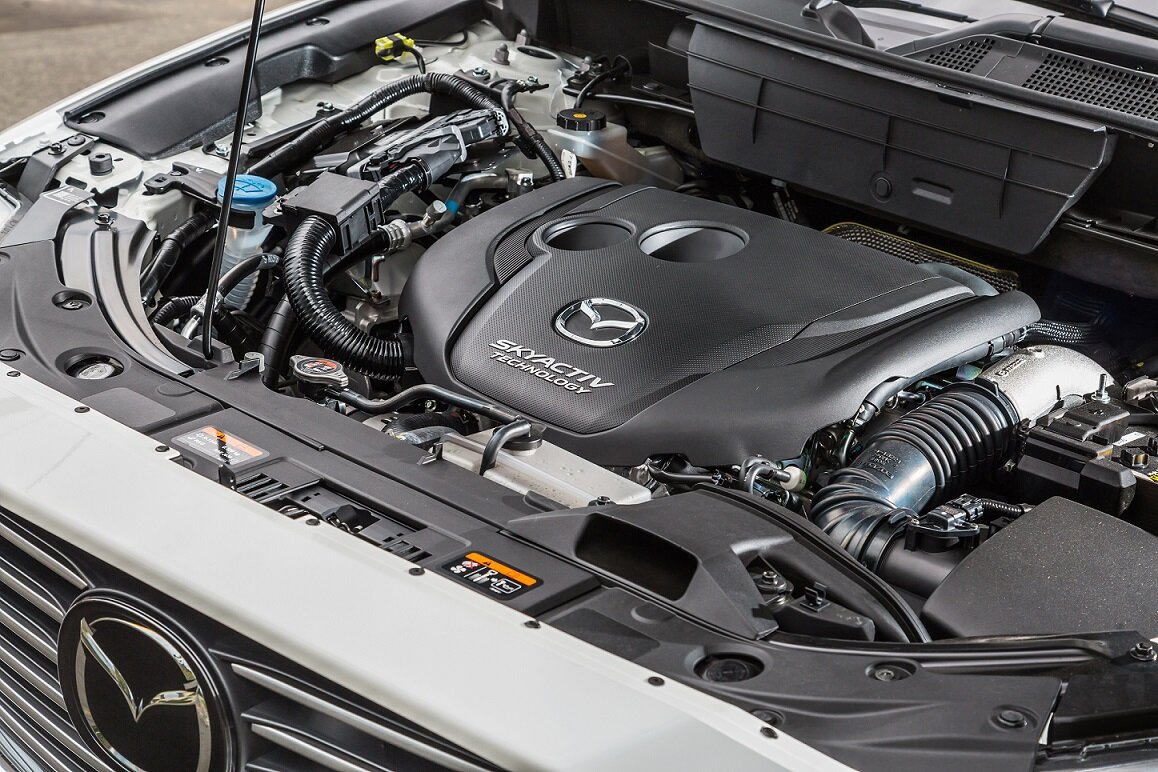
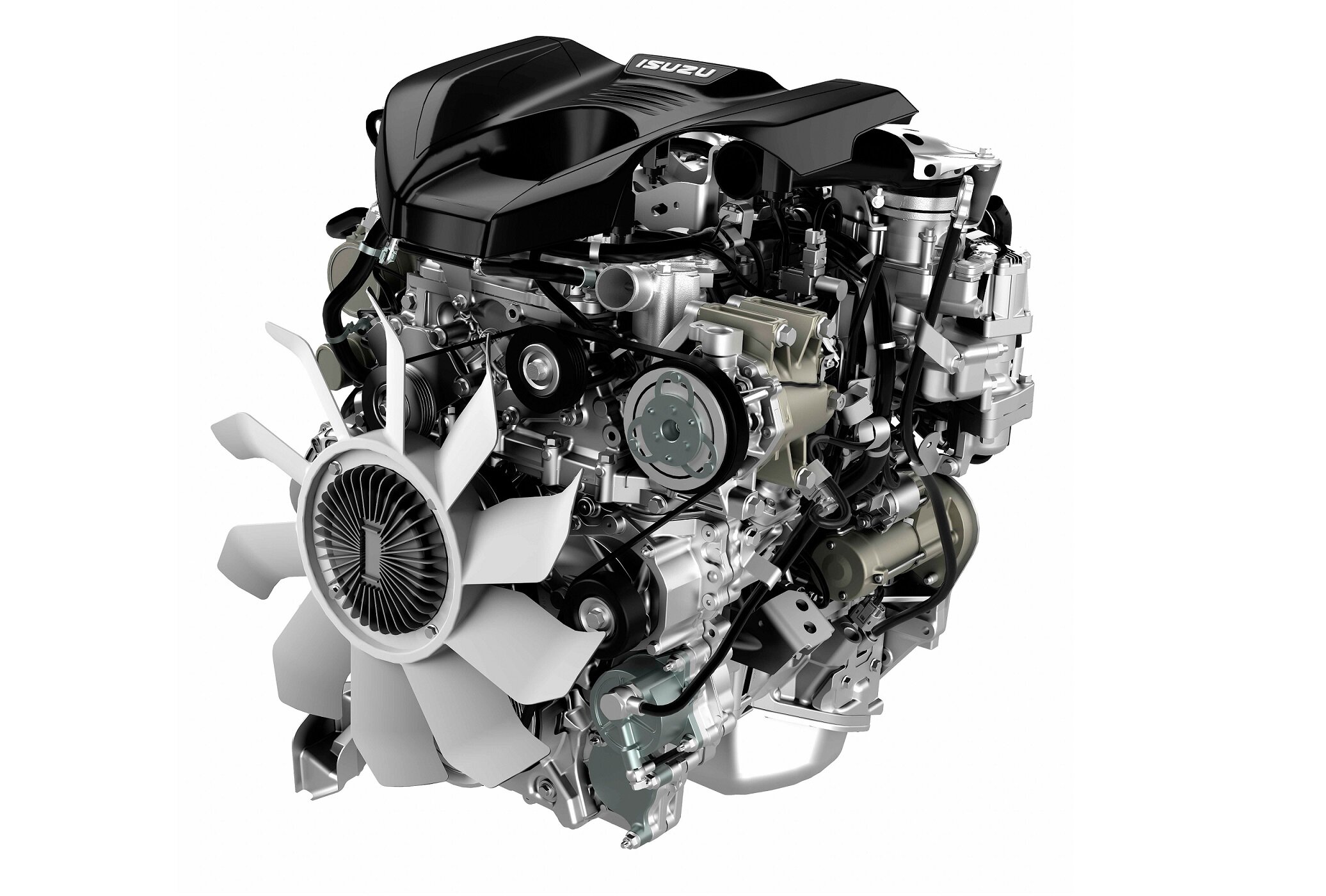

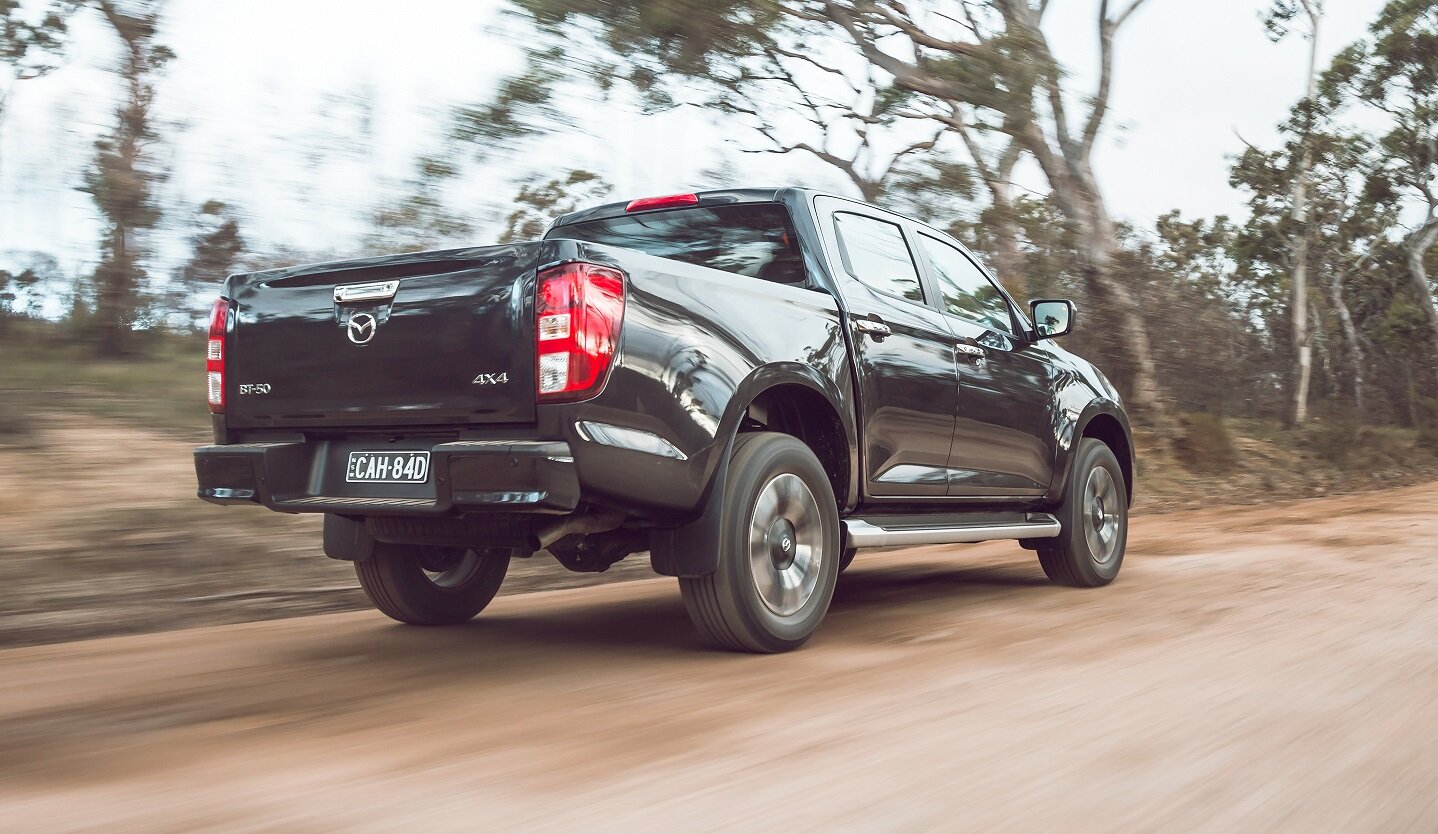
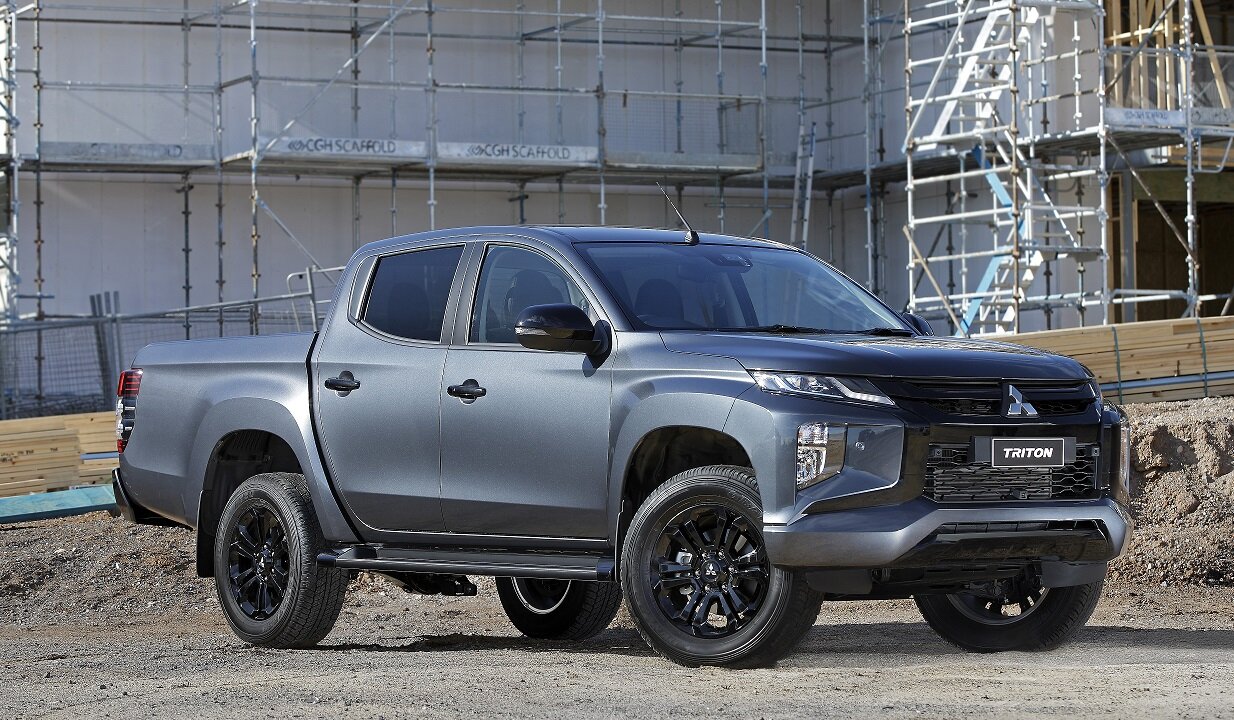
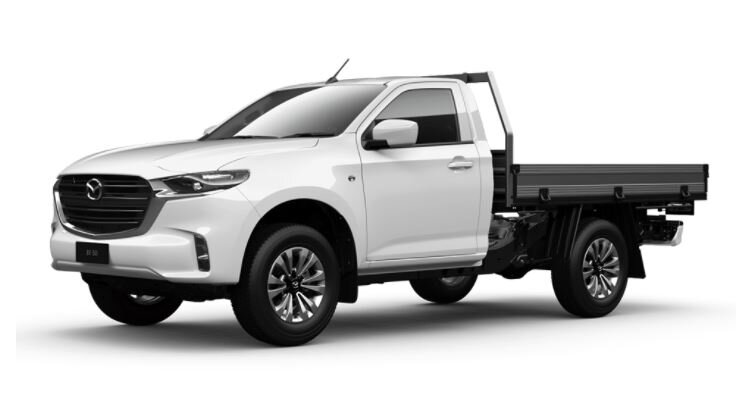
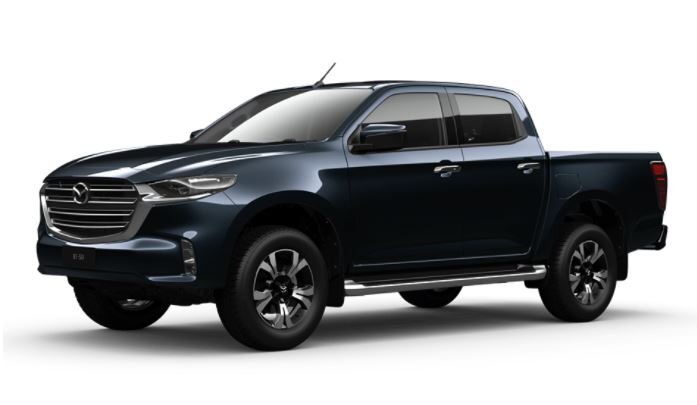
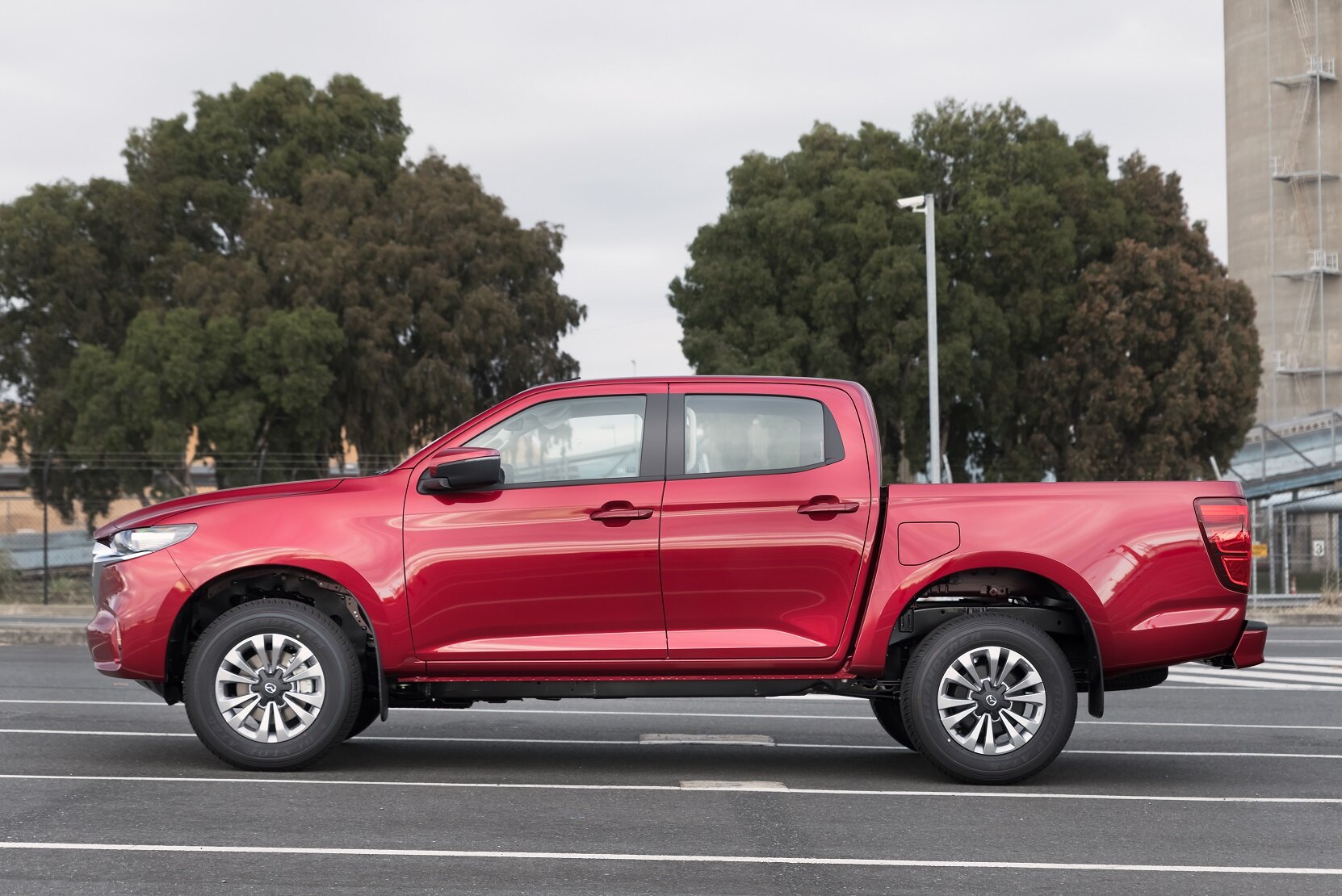

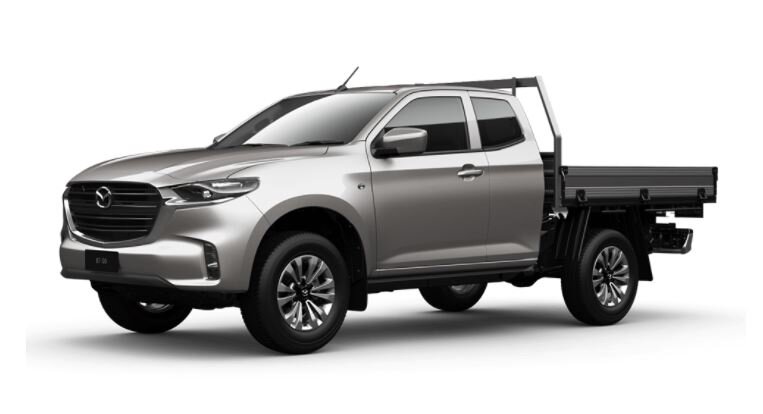









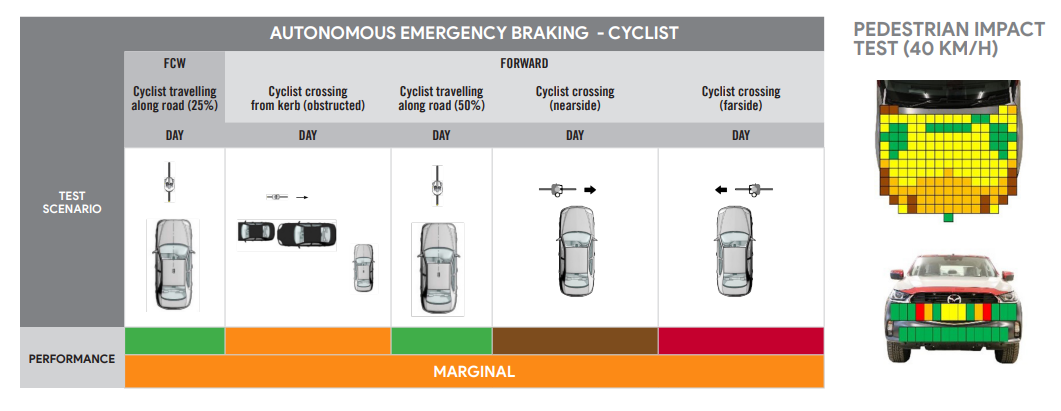

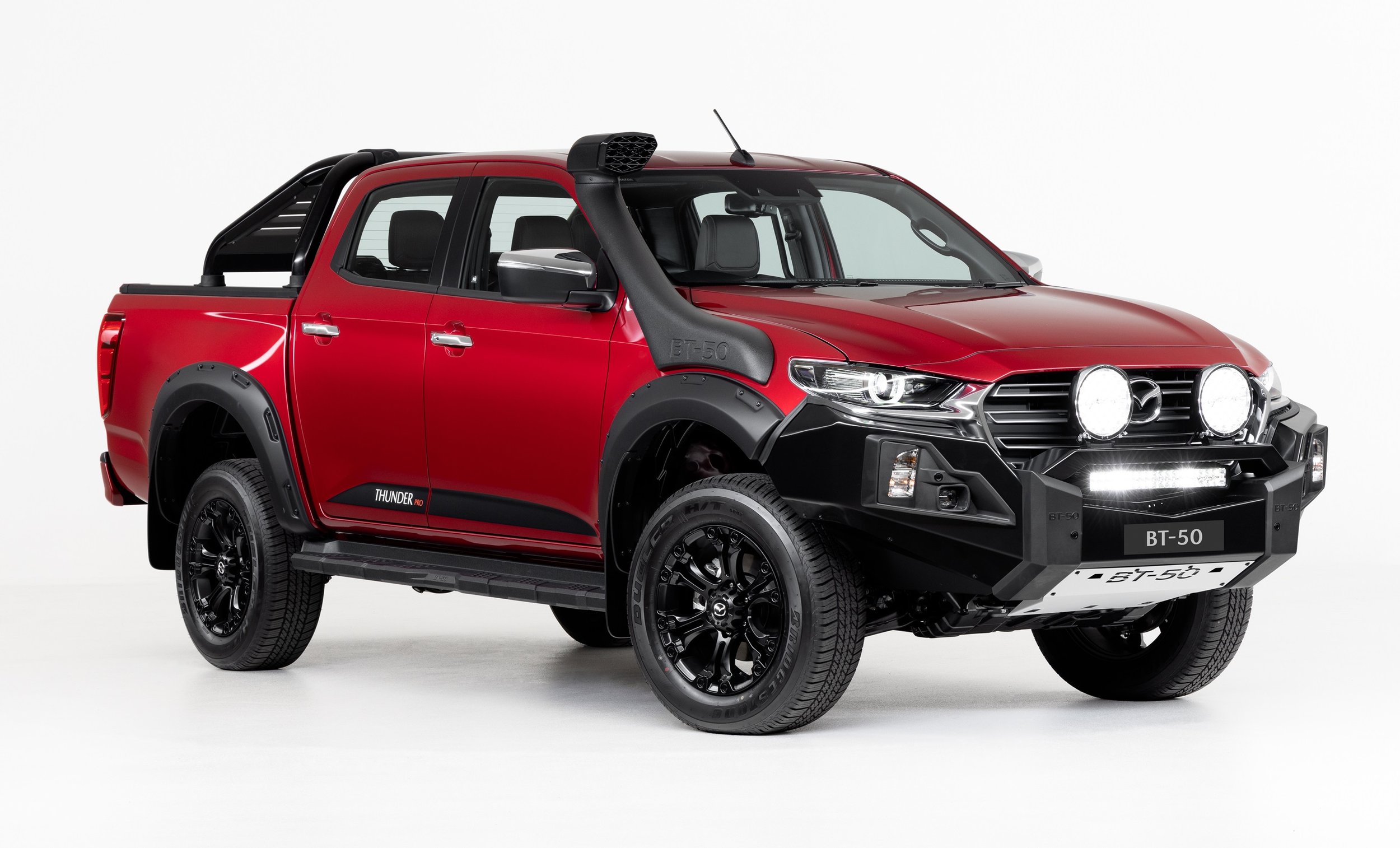

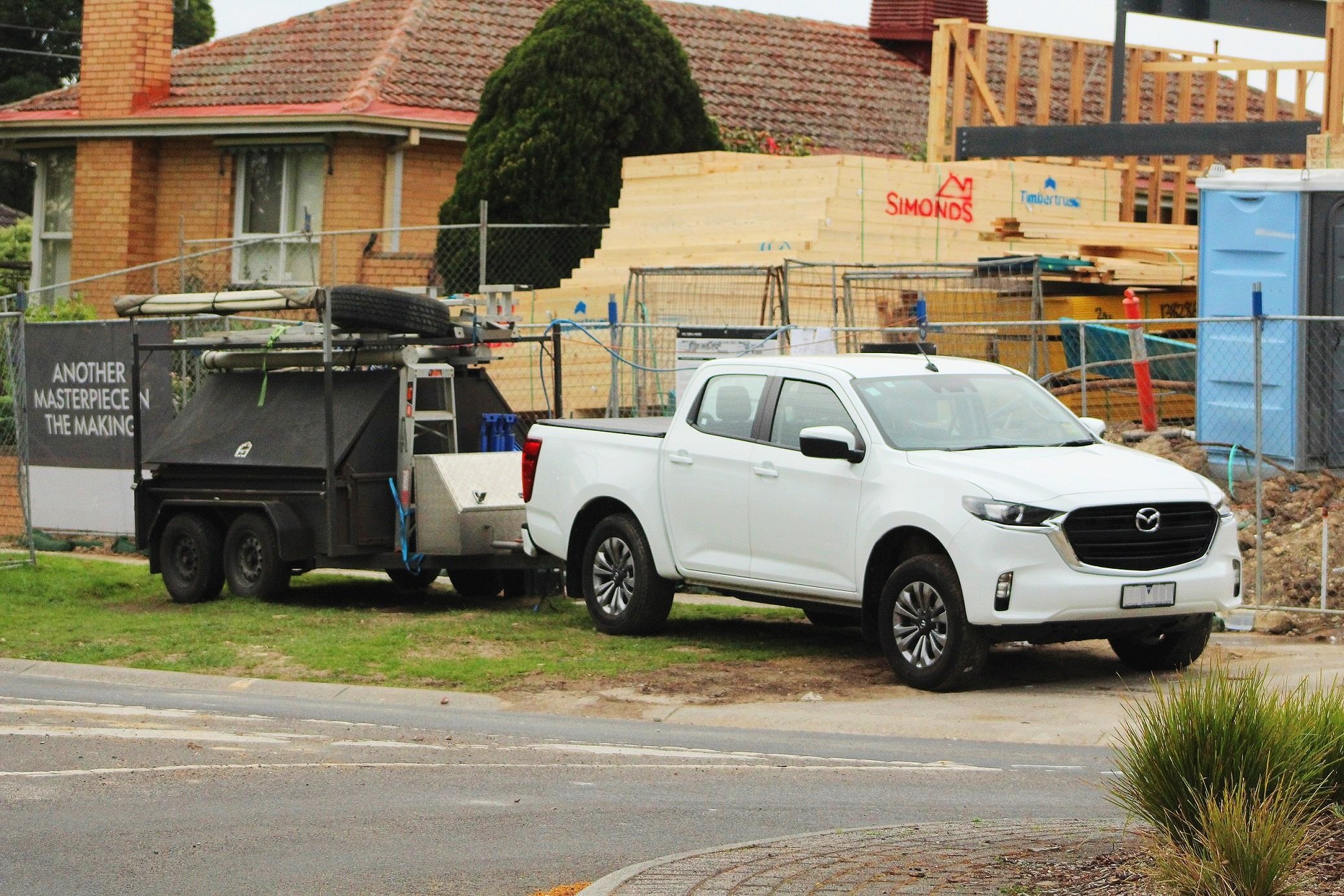













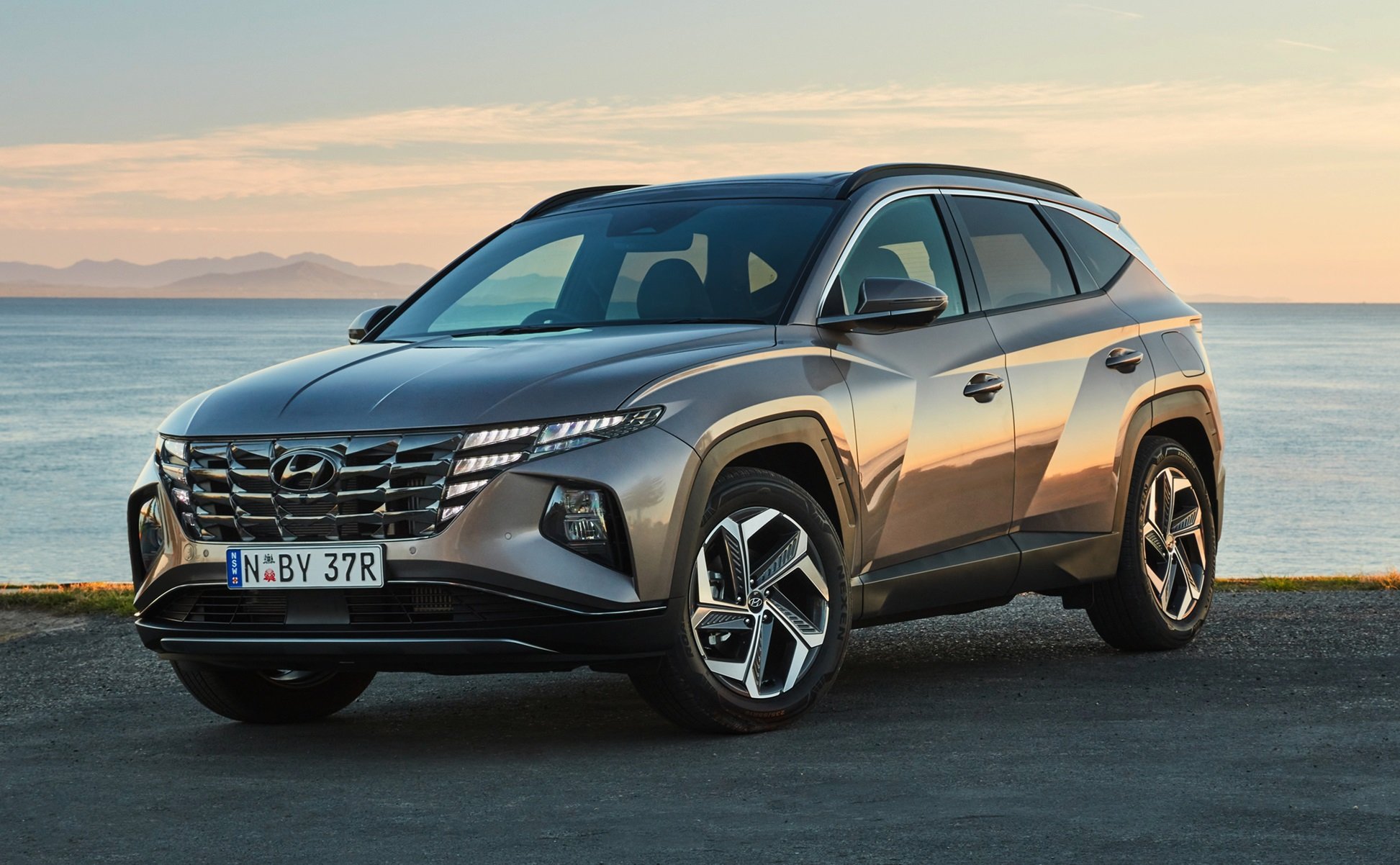

Toyota RAV4 is the best-selling medium SUV in Australia, offering good resale value and envious fuel economy. If you need an enormous boot and a simple, functional family vehicle, RAV4 is hard to beat.